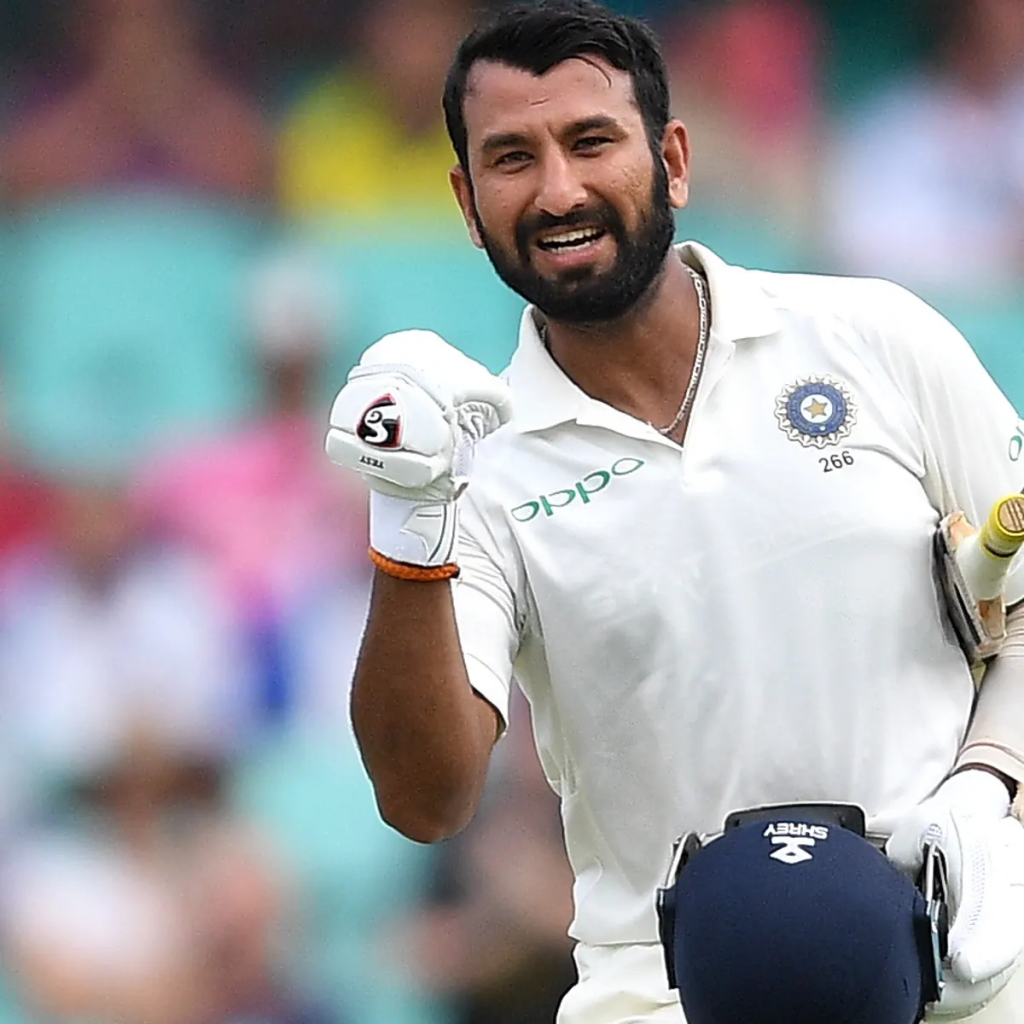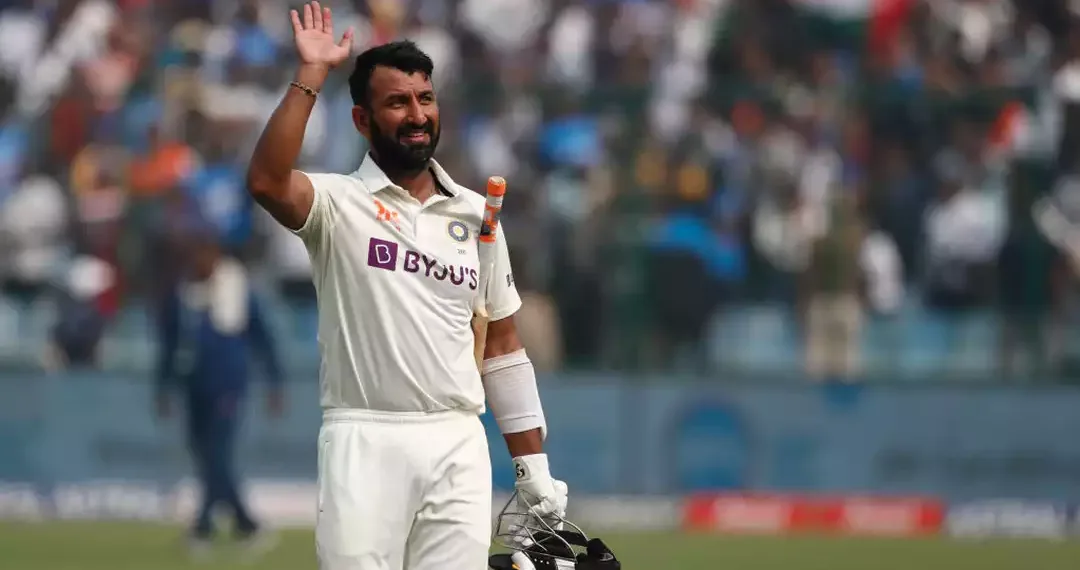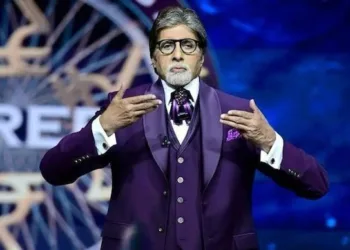A young boy from Rajkot, watching Rahul Dravid bat with unwavering patience against Australia’s fiercest bowlers, dreaming that someday he too would earn the nickname “The Wall.” Fast forward fifteen years, and that dream became reality. Today, as Cheteshwar Pujara announces his retirement from all forms of cricket, we bid farewell to modern cricket’s most stubborn defender – a man who turned patience into an art form.
The announcement came via an emotional social media post, ending speculation about whether he would return to the Ranji Trophy for Saurashtra. Just days before, reports had claimed that Pujara had made himself available for the Ranji Trophy 2025/26. Instead, the 37-year-old has chosen to close the book on one of India’s most remarkable Test careers.
Table of Contents
The Numbers That Tell a Remarkable Story
Let’s pause and appreciate the extraordinary journey that began on October 9, 2010, when a nervous young batter from Saurashtra walked out at M. Chinnaswamy Stadium in Bengaluru to face his first Test delivery. What followed was a 15-year odyssey that would redefine what it means to be a Test specialist in modern cricket.
| Format | Matches | Innings | Runs | Highest Score | Average | Centuries | Fifties |
|---|---|---|---|---|---|---|---|
| Tests | 103 | 176 | 7,195 | 206* | 43.60 | 19 | 35 |
| ODIs | 5 | 5 | 51 | 27 | 10.20 | 0 | 0 |
| First-Class | 278 | 457 | 21,301 | 352 | 51.82 | 66 | 81 |
| List A | 130 | 127 | 5,759 | 174 | 57.01 | 16 | 34 |
| T20s | 71 | 63 | 1,556 | 100* | 29.35 | 1 | 9 |
These aren’t just numbers – they’re testament to a career built on unwavering dedication to the longest format. In 103 Tests, he amassed 7195 runs, averaging 43.60. The veteran is India’s 8th highest run-getter in Tests, boasting of 19 centuries and 35 fifties to his name.
The Modern Wall: More Than Just Statistics
Considered The Wall of modern cricket, Pujara amassed 3839 runs while playing at home. But to understand Pujara’s impact, you need to look beyond averages and centuries. He was the anchor around which India’s Test renaissance was built, the man who could bat for entire sessions without breaking a sweat, frustrating bowling attacks into submission.
His specialty? Making bowlers question their life choices. While his teammates played aggressive cricket around him, Pujara would stand like a sentinel, absorbing pressure, wearing down bowlers, and creating opportunities for others to capitalize. In an era obsessed with strike rates and boundary hitting, he proved that patience could be just as destructive.
The Australia Specialist: A Love Affair with Tough Conditions
He surely loved playing against Australia against whom he scored 2074 runs from 25 matches between 2010 and 2023. This statistic reveals something beautiful about Pujara’s character – he thrived where others struggled. Australia, with their pace and bounce, their sledging and mental warfare, became his favorite hunting ground.
Remember the 2018-19 series in Australia? While headlines focused on Virat Kohli’s centuries, it was Pujara’s marathon innings that wore down the Australian bowling attack. He would face 250+ deliveries in an innings, not to entertain the crowd, but to break the spirit of the opposition. It was cricket as psychological warfare, and Pujara was a master tactician.
The Curious Case of Limited-Overs Cricket
Here’s where Pujara’s story becomes fascinatingly unique in modern cricket. He largely played as a Test player and featured in just 5 ODIs since making his debut in the format in 2013. In an era where players are expected to excel across all formats, Pujara remained unapologetically one-dimensional.
Those five ODI appearances tell their own story – a brief experiment that proved what many already knew. Pujara was built for the long game, for five-day battles, for sessions that tested mental fortitude more than hand-eye coordination. His ODI average of 10.20 wasn’t a failure; it was confirmation that some players are destined for greatness in specific formats.
The First-Class Giant: Domestic Dominance
However, he was a force to be reckoned with in first-class cricket where he has amassed over 21,000 runs to his name from 278 matches. This statistic perhaps best captures Pujara’s true greatness. While his Test career garnered headlines, his first-class record reveals a batsman who dominated domestic cricket with the same relentless consistency.
A first-class average of 51.82 with 66 centuries – these numbers belong in the same conversation as domestic legends who never got the international recognition they deserved. Pujara got his due at the international level, but his domestic dominance provided the foundation for everything that followed.

The Unfinished Business: From WTC Final to Farewell
The out-of-favour batter last featured in a Test for India in the World Test Championship (WTC) final against Australia at Lord’s in June 2023. How fitting that his final Test appearance came at Lord’s – the home of cricket – against Australia, his favorite opposition.
The WTC final represented both triumph and heartbreak for Pujara. India reached the pinnacle of Test cricket, validating years of patient rebuilding. Yet individual glory eluded him in that final, a metaphor for a career spent in service of team success rather than personal milestones.
The Timing Question: Why Now?
Taking to social media platform X, Pujara penned an emotional note, thanking fans for their love and support as he announced his retirement. This means the veteran will now no longer be a part of the Ranji Trophy either where he played for Saurashtra.
The timing raises questions. Was there another comeback in him? Could the man who frustrated Australia for over a decade have contributed to one more tour? The answer, perhaps, lies in understanding what drives someone like Pujara. He played cricket not for personal glory, but for the pure love of batting, of occupying the crease, of serving his team.
When that passion begins to wane, when the body no longer responds as it once did, champions like Pujara have the wisdom to walk away with dignity intact.
The Legacy: Redefining Modern Test Cricket
Pujara’s retirement marks the end of an era – not just for Indian cricket, but for Test cricket globally. In a format increasingly dominated by aggressive batting and entertainment value, he proved that traditional virtues still had a place.
He showed young batsmen that you don’t need to hit sixes to dominate bowlers. You can do it through patience, through technique, through an unshakeable belief in your method. He made Test cricket sexy again for purists, reminding us why five-day cricket remains the ultimate test of character.
The Saurashtra Connection: Staying True to Roots
Throughout his international career, Pujara remained loyal to Saurashtra, his domestic team. In an era where players chase better contracts and facilities, he stayed rooted to the soil that nurtured him. This loyalty extended beyond sentiment – he was their leading run-scorer, their most famous son, their bridge to cricket’s biggest stage.
His retirement from all cricket means Saurashtra loses not just a player, but an institution. Young cricketers in the region will no longer have the inspiration of seeing their local hero in action, but they’ll have the example of his dedication to carry forward.
What’s Next: Life After the Crease
While Pujara hasn’t announced specific plans, his deep understanding of batting technique and game situations makes him an ideal candidate for coaching roles. The Board of Control for Cricket in India (BCCI) and various state associations would benefit enormously from his expertise.
His experience in county cricket, where he played for Yorkshire, Nottinghamshire, and Sussex, also opens doors for coaching opportunities abroad. Young batsmen worldwide could learn from someone who mastered the art of playing pace bowling in challenging conditions.
The Emotional Farewell: More Than Just Cricket
The Saurashtra batter, who made his Team India debut in 2010, has played over 100 Tests and was one of India’s best number three batters in the longest format of the game. This simple statement captures the essence of a remarkable career – consistency, longevity, and excellence in the most challenging position in Test cricket.
Position number three in Test cricket is where teams send their best technical batsman, the person who can negotiate both the new ball and build partnerships with the middle order. For over a decade, that person for India was Cheteshwar Pujara.
Conclusion: The Wall’s Final Stand
As cricket bids farewell to one of its most patient practitioners, we’re reminded that greatness comes in many forms. Pujara may not have the flamboyance of a Kohli or the explosiveness of a Pant, but he had something equally valuable – the ability to stay at the crease when his team needed him most.
His career teaches us that in cricket, as in life, sometimes the greatest service you can provide is simply refusing to give up. Sometimes, the most heroic act is not hitting the winning runs, but ensuring your team doesn’t lose.
Thank you, Cheteshwar Pujara, for showing us that patience is indeed a virtue, and that walls, when built properly, can protect the most precious things we have.
Explore more cricket legends and their incredible journeys in our Cricket Legends section and stay updated with the latest retirement news in our Indian Cricket coverage at TechnoSports.
For comprehensive cricket analysis and player tributes, visit TechnoSports – where cricket stories find their voice.







